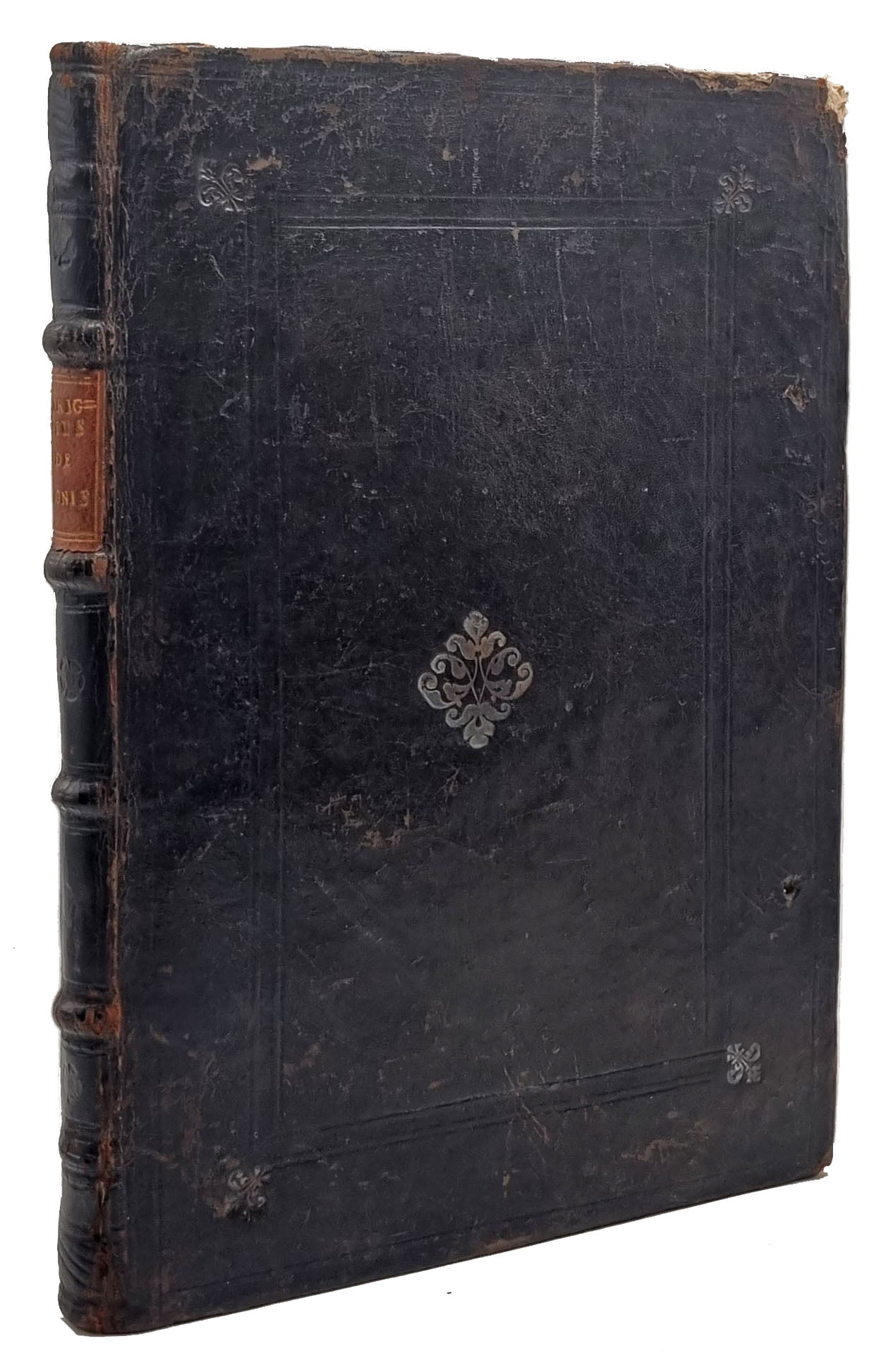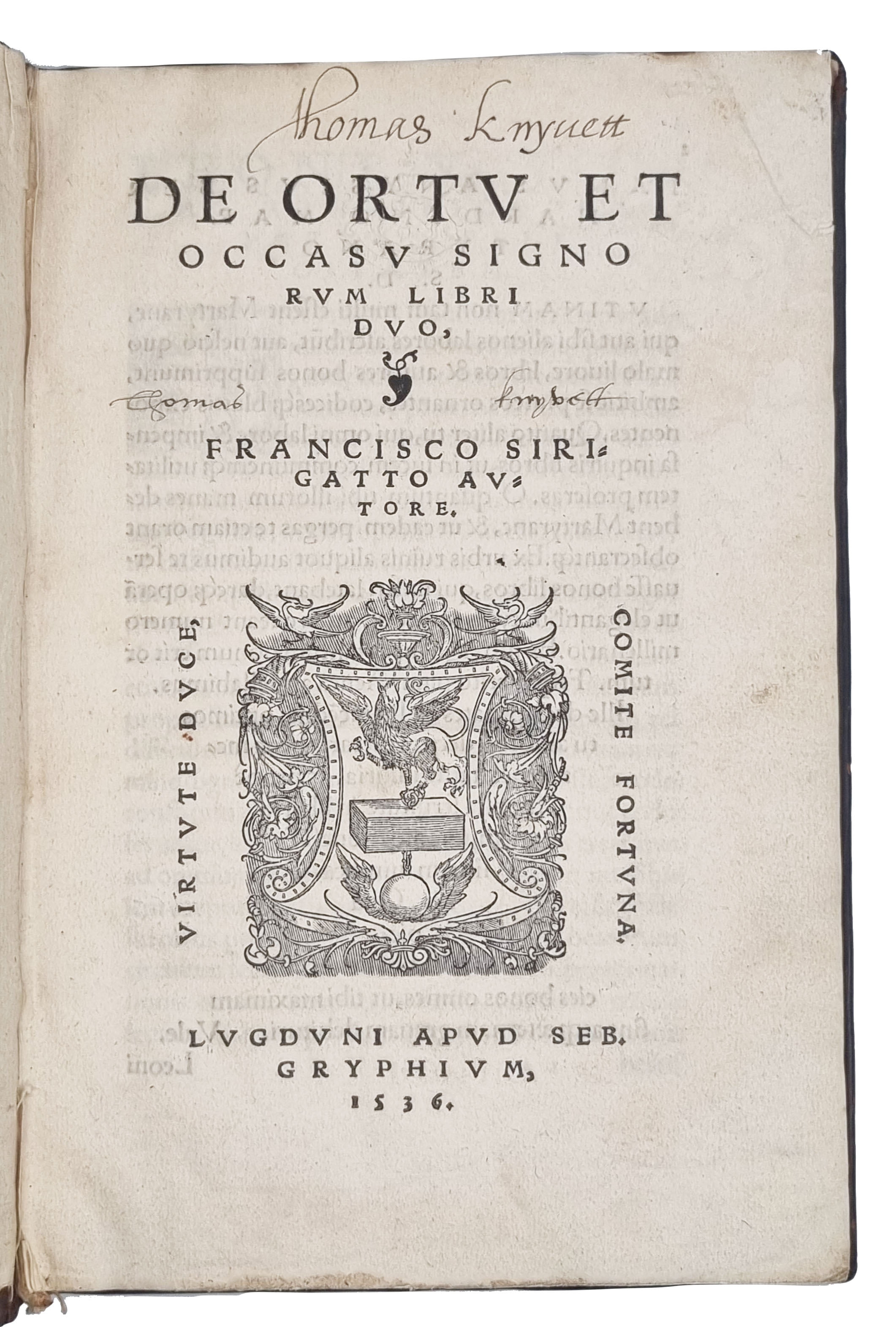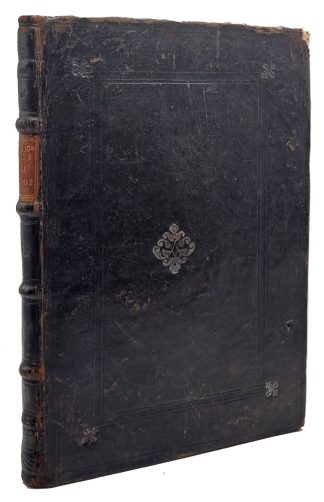SIRIGATTO, Francisco
De Ortu et Occasu Signorum Libri duo.
Lyon, Sebastianus Grypius, 1536£3,750.00
4to. pp. 132, [iv]. Roman letter. Woodcut initials with human figures, printer’s device on title and verso of final leaf. A very little occasional light thumbing, small crease to upper margin of a few pages (including title), not touching text. In fine contemporary ?English calf over pasteboard, with double ruled rectangular panel, fleur de lys gilt at corners, central fleurons gilt. Spine in seven compartments, 17th-century red leather label. Corners a little bumped, joints slightly cracked at head and foot of spine, very light scuffing to boards, lacking ties. 16th-century inscription of Thomas Knyvett on title, repeated (most probably his pressmark on final leaf), library of the Earls of Macclesfield at Shirburn Castle, their armorial bookplate inside upper cover, and blindstamp to first gathering.
A very good copy of the second, Lyonnaise, edition of Sirigatto’s astronomical work, with a desirable provenance. Sirigatto, a Florentine working before 1550, initially published this work in Naples in 1531 (“Fort rare” Huzeau & Lancaster). Using the Ptolemaic system of celestial motion, Sirigatto here lays out his own observations of the appearance and the various movements of the constellations throughout the year. The work is divided into two ‘books’, the first dealing with a day-by-day annual account of the appearance of the constellations, the second describing their movements in ‘rising’ and ‘setting’ (‘ortu’ and ‘occasu’), this data theoretically permitting the contemporary scientist to predict the motion of the stars. In his preface to Leo X, Sirigatto tells us that the work is intended for use in all branches of science; in the 16th century, of course, everything from chronology to navigation to agriculture was essentially star dependant.
Thomas Knyvett of Ashwellthorpe (c.1539-1618), was a noted sixteenth-century book collector (for this collection, see: D. McKitterick, The Library of Sir Thomas Knyvett of Ashwellthorpe, Cambridge, 1978), more than four hundred of whose books passed (c. 1693) into the hands of John Moore, Bishop of Ely (whom Dibdin calls “the father of black-letter collectors in this country”), his collection was purchased en bloc by George I then passed to the Cambridge University Library. This copy may, then, have either been sold as a duplicate in Knyvett’s or Moore’s collections, or been sold from Knyvett’s collection in the eighty or so years between his death and Moore’s purchase of his books, and thence acquired by the Earls of Macclesfield (the first Earl was actively collecting at the turn of the seventeenth and eighteenth centuries).
Houzeau & Lancaster 2441 “rare”; BMC French, p. 402; Riccardi I, 459; Thorndike V p.253; Cantamessa II 4252; Baudrier VIII, p. 91; Not in Adams; cf. D. McKitterick, Cambridge University Library, A History, Vol II.In stock




